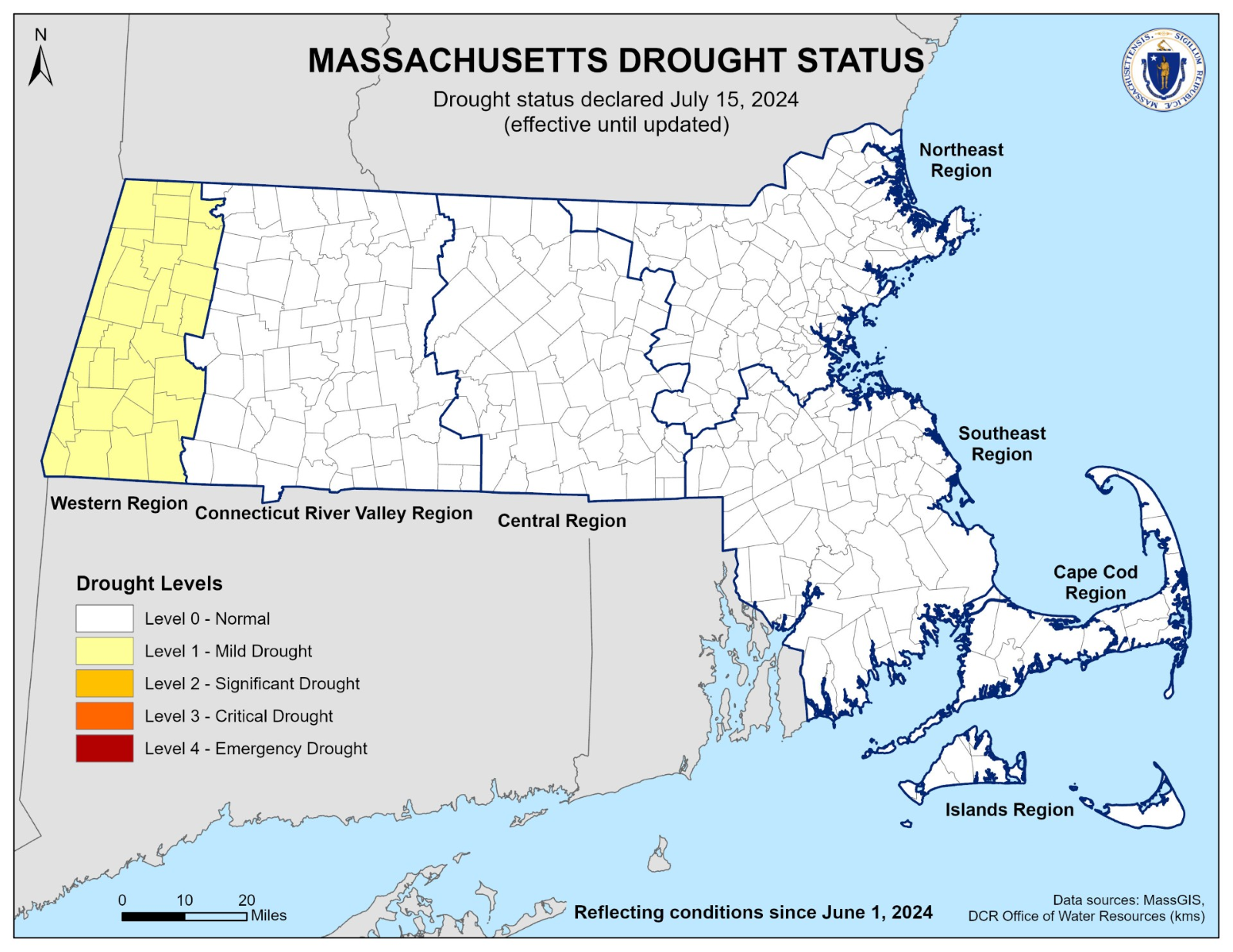- Executive Office of Energy and Environmental Affairs
- Drought Management Task Force
Media Contact
Aisha Revolus, Communications Manager

BOSTON — Following two months of below-average rainfall, Energy and Environmental Affairs (EEA) Secretary Rebecca Tepper declared a Level 1-Mild Drought in the Western Region of Massachusetts. All other regions of the state – Connecticut River Valley, Central, Northeast, Southeast, Cape Cod, and Islands – remain in Level 0-Normal conditions. As outlined in the Massachusetts Drought Management Plan, a Level 1-Mild Drought reflecting the onset of a drought warrants detailed monitoring of drought conditions, close coordination among state and federal agencies, and technical outreach and assistance to the affected municipalities.
“As we continue to experience infrequent rainfall and intense heat waves, it is crucial to take meaningful action to protect our resources,” said EEA Secretary Rebecca Tepper. “Conserving water during a drought is not just a short-term solution – it's a critical step in addressing climate change. By using water wisely, we can reduce stress on water sources already strained by changing weather patterns. It is important we work together to safeguard our water for the present and the future.”
During the past several months, Massachusetts has experienced irregular rainfall events. The decision to declare the Western Region a Level 1-Mild Drought was informed by recommendations and discussions by the Drought Management Task Force (DMTF), which is composed of state and federal officials, and other entities. Several factors are considered in determining whether there is a drought such as, precipitation, groundwater levels, streamflow, lakes and impoundments, evapotranspiration, and fire potential. During a mild drought, below-normal conditions are just setting in, and impacts are slowly starting to be seen across the region. The declaration will remain in effect until water levels return to normal conditions in this region.
Those living and working within a Level 1 – Mild Drought region, including residents utilizing a private well, are asked to take the following actions:
For Region in Level 1 - Mild Drought
Residents and Businesses:
- Minimize overall water use;
- Limit outdoor watering to one day per week from 5:00PM to 9:00AM, or less frequently if required by your water supplier;
- Plant only local and drought-resistant species;
- Fix indoor leaks, such as from toilets, faucets, and showers, which result in more than 60 percent of indoor use;
- For larger buildings and businesses, conduct water audits to identify areas of leaks and potential water conservation opportunities;
- Minimize lawn sizes; and,
- Harvest rainwater for outdoor watering.
Communities:
- Establish a year-round water conservation program that includes public education and communication, taking advantage of the state’s library of outreach materials;
- Provide timely drought and water conservation information to local residents and businesses;
- Check emergency inter-connections for water supply; and,
- Develop a local drought management plan (learn more here).
The Drought Management Task Force will meet again on Tuesday, August 6 at 1:00 pm. State agencies will continue to closely monitor and assess conditions across the state, coordinate any needed dissemination of information to the public, and help federal, state, and local agencies prepare additional responses that may be needed in the future. For further information on water conservation and what residents can do, visit the EEA’s drought and water conservation pages.
###